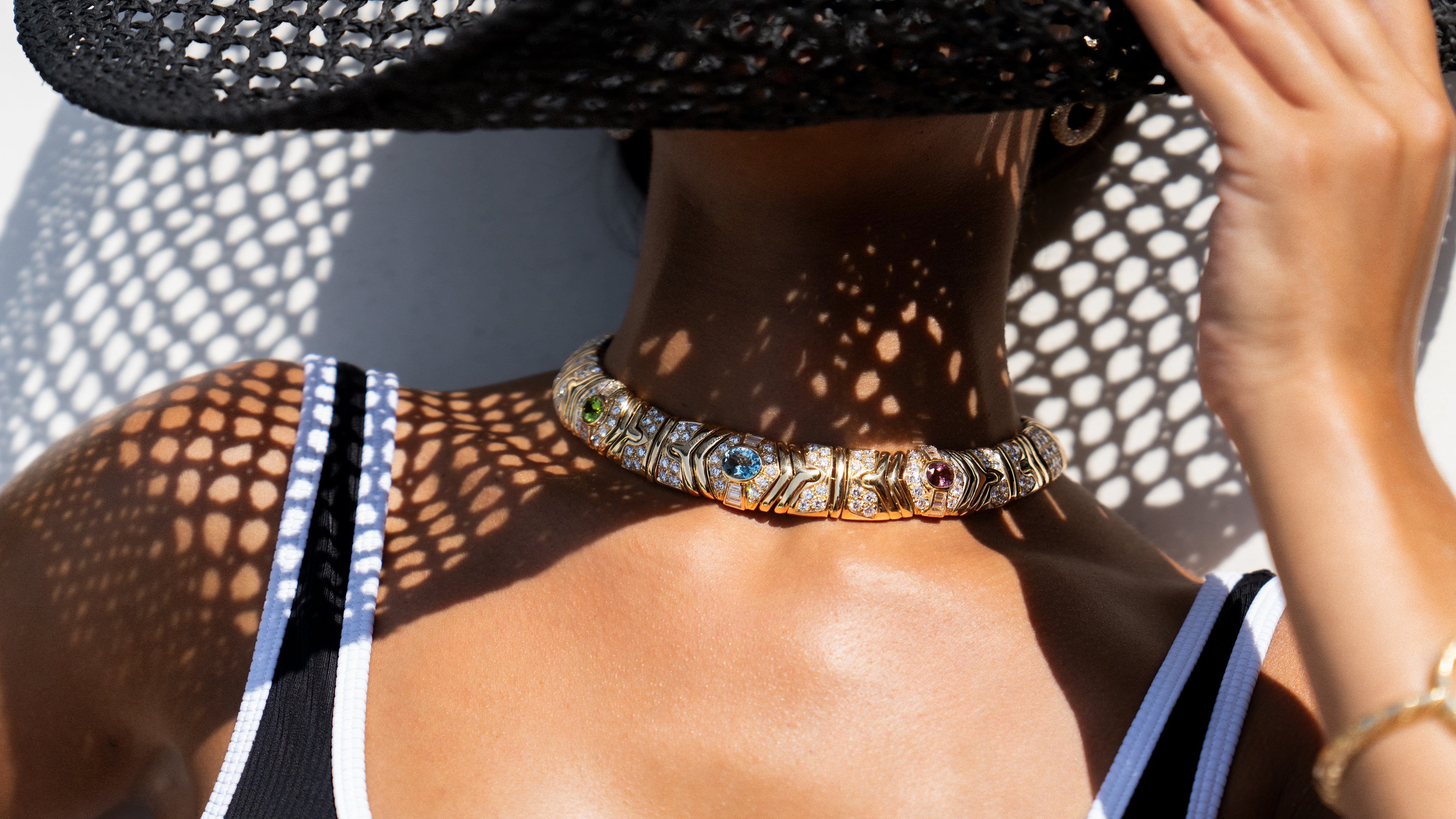Ruser Jewels
Who could have predicted that shoeboxes full of freshwater pearls purchased in the 1930s would one day transform into wearable objets d’art?
From the Start
William Ruser was born in 1908 in Philadelphia, Pennsylvania. At the age of 17, he began his jewelry career with Howard Hoeffer in Atlantic City. The business was a branch of Trabert & Hoeffer-Mauboussin Jewelers. Trabert & Hoeffer was an American company that partnered with the Parisian Maison Mauboussin. In the ensuing years, Ruser learned his craft and, in the 1930s, moved to Beverly Hills to manage a store there. He married his wife, Pauline, in 1934.
New Beginnings
World War II interrupted his career, and William Ruser did his part for Uncle Sam, serving in the Army Air Corps. Following the war, William and Pauline opened their eponymous shop at 300 Rodeo Drive in 1947. The firm was known for its elegant platinum and diamond jewelry that embraced post-war optimism and a lighthearted spirit.
What really put Ruser on the cutting edge was those shoeboxes of freshwater pearls he’d purchased from a Mississippi button salesman before the war.
Freshwater pearls were used lavishly during the Art Nouveau period, but faded from popularity in the ensuing decades. Ruser helped bring them back.
Ruser used the baroque, freshwater pearls to create sumptuous designs that cleverly depicted a fanciful menagerie that included penguins, hummingbirds, squirrels, butterflies, swans, skunks, and, quite notably, poodles. Plus, impish cherubs that sported freshwater pearl accents. Ruser saw in the irregular shapes and uneven textures of the pearls the possibility to create jewels that could be made beautiful with the right combination of gold and gems.
A Beverly Hills Sensation
Ruser’s location in Beverly Hills naturally drew a Hollywood clientele. Famous actresses such as Marlene Dietrich, Lana Turner, Claudette Colbert, and Joan Crawford were all big fans of Ruser creations. Joan Crawford, in particular, owned several Ruser pieces, including a marvelous ensemble of amethyst jewelry, as well as a simple, elegant baguette diamond necklace and ruffled feather brooch decorated with diamonds. Loretta Young was especially fond of a swan brooch she procured from Ruser that made beautiful use of his baroque pearls.
Featured on Film
Many of Ruser’s pieces made their way onto the big screen. In the film, Sorry, Wrong Number, Ruser received his first screen credit for the jewelry worn by Barbara Stanwyck. The film featured both jewels designed just for the film (an iris brooch and beribboned diamond earrings) as well as items from the actress’s personal collection. The most notable of these was a gardenia flower brooch, adorned in diamonds that swayed from a chain around her neck, with earrings to match.
Other films that feature Ruser jewels include Sudden Fear (starring Joan Crawford) and Career (with Shirley MacLaine and Carolyn Jones).
Other Notables
Shirley Temple owned a Ruser platinum bracelet that featured a line of musicians cleverly connected by baguette and round diamonds and dotted with star rubies.
Pixies and cherubs rode on clouds and played musical instruments, while children engaged in golf and fishing and went in search of adventure.
One uniquely recognizable collection depicted small children acting out the nursery rhyme that attributed characteristics to the day of the week in which they were born:
For example, Monday’s child held a mirror, and Wednesday sat glumly with head in hands while Friday’s child frolicked with a puppy.
In addition to his pearl-infused designs and the exquisite diamond and ensemble jewelry that were his stock in trade, Ruser also offered the fashionable accessories that were part of every jeweler’s assortment at the time – compacts, lighters, and personal valet items. Ruser put his own spin on these, too. His whimsical animal cufflinks were a big hit.
For the twenty years he remained in business, Ruser was an unqualified success. In its heyday, the firm employed up to 40 people.
Retirement
In 1969, Ruser retired and closed his salon, selling his location to Van Cleef & Arpels. Ruser passed away in 1994.
Ruser creations remain highly collectible to this day; his whimsical pieces enjoyed for their artistic spirit and playful exuberance.
